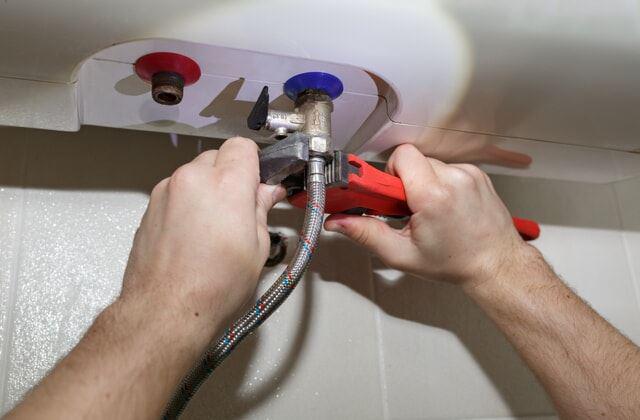Tips on How to Maintain Your Home's Hot Water System Functioning WellEssential Tips on Maintaining Your Home's Hot Water System
Tips on How to Maintain Your Home's Hot Water System Functioning WellEssential Tips on Maintaining Your Home's Hot Water System
Blog Article
Everybody is bound to have their own unique rationale about How to Maintain a Hot Water Heater in a Few Simple Steps.

Warm water is essential for daily convenience, whether it's for a revitalizing shower or cleaning dishes. To ensure your warm water system runs successfully and lasts longer, routine upkeep is vital. This short article offers sensible tips and understandings on how to maintain your home's hot water system to prevent disturbances and costly repair work.
Introduction
Keeping your home's warm water system might seem difficult, however with a couple of straightforward steps, you can ensure it operates smoothly for several years to find. This guide covers whatever from recognizing your warm water system to do it yourself maintenance tips and knowing when to hire expert assistance.
Value of Keeping Your Warm Water System
Normal upkeep not just extends the lifespan of your hot water system but also ensures it operates efficiently. Disregarding upkeep can cause reduced effectiveness, greater power expenses, and even premature failure of the system.
Signs Your Hot Water System Needs Maintenance
Knowing when your hot water system needs focus can protect against significant concerns. Keep an eye out for indicators such as irregular water temperature level, odd noises from the heating system, or corroded water.
Purging the Hot Water Heater
Flushing your water heater removes sediment build-up, boosting efficiency and prolonging its life.
Checking and Replacing Anode Rods
Anode poles protect against deterioration inside the storage tank. Examining and replacing them when worn out is crucial.
Facility Concerns Needing Professional Help
Instances consist of major leaks, electric troubles, or if your water heater is regularly underperforming.
Routine Specialist Upkeep Advantages
Professional upkeep can consist of comprehensive examinations, tune-ups, and making sure compliance with safety criteria.
Examining and Adjusting Temperature Level Settings
Adjusting the temperature level settings ensures optimum performance and safety.
Do It Yourself Tips for Maintenance
You can perform numerous maintenance jobs on your own to keep your warm water system in top problem.
Looking for Leaks
Consistently examine pipes and links for leaks, as these can bring about water damage and greater expenses.
Understanding Your Warm Water System
Before diving right into maintenance tasks, it's handy to comprehend the standard elements of your hot water system. Normally, this includes the hot water heater itself, pipes, anode poles, and temperature controls.
Regular Monthly Maintenance Tasks
Routine monthly checks can assist capture minor concerns before they rise.
Testing Stress Relief Valves
Checking the pressure relief valve guarantees it functions appropriately and prevents extreme stress accumulation.
Shielding Pipes
Protecting warm water pipes minimizes heat loss and can conserve power.
When to Call a Professional
While DIY maintenance is valuable, some problems call for professional knowledge.
Conclusion
Routine upkeep of your home's hot water system is necessary for efficiency, durability, and price savings. By complying with these pointers and knowing when to seek expert aid, you can make sure a reliable supply of hot water without unforeseen disturbances.
How to Maintain an Instant Hot Water Heater
Before tinkering with your hot water heater, make sure that it’s not powered on. You also have to turn off the main circuit breaker and shut off the main gas line to prevent accidents. Also turn off the water valves connected to your unit to prevent water from flowing into and out of the appliance. 2. When you’re done, you have to detach the purge valves’ caps. These look like the letter “T” and are situated on either side of the water valves. Doing so will release any pressure that has accumulated inside the valves while at the same time avoid hot water from shooting out and burning your skin. 3. When the purge valves’ caps are removed, you have to connect your hosing lines to the valves. Your unit should have come with three hoses but if it didn’t, you can purchase these things from any hardware or home repair shops. You can also get them from retail stores that sell water heating systems. Read the user’s manual and follow it to complete this task properly. When the hosing lines are connected, open the purge port’s valves. 4. You should never use harsh chemical cleaners or solutions when cleaning your unit. Make use of white vinegar instead. It should be undiluted and you’ll probably use about 2 gallons. 5. Now flush your water heater. This task should probably take about 40 minutes. We can’t give you specific directions for this because the procedure is carried out depending on the type, model and brand of your heater. With that being said, refer to the user’s manual. 6. When you’re done draining the unit, you have to turn off the purge port valves again. Remove the hosing lines that you earlier installed on each of the water valves. Put the valve caps (purge port) back in their respective places and be very careful so as not to damage the rubber discs that are found inside these caps. 7. Now that everything’s back in place, check your user’s manual again to find out how to reactivate your water heating system. 8. Once it is working, turn one of your hot water faucets on just to let air pass through the heater’s water supply pipes. Leave the tap on until water flows smoothly out of it. https://www.orrplumbing.com/blog/2014/september/how-to-maintain-an-instant-hot-water-heater/

We had been shown that editorial about What Kind of Maintenance Do Water Heaters Need? from someone on our other web page. Make sure you pause to share this blog post if you enjoyed reading it. Thanks a bunch for your time. Return soon.
Click Here To Read More Report this page